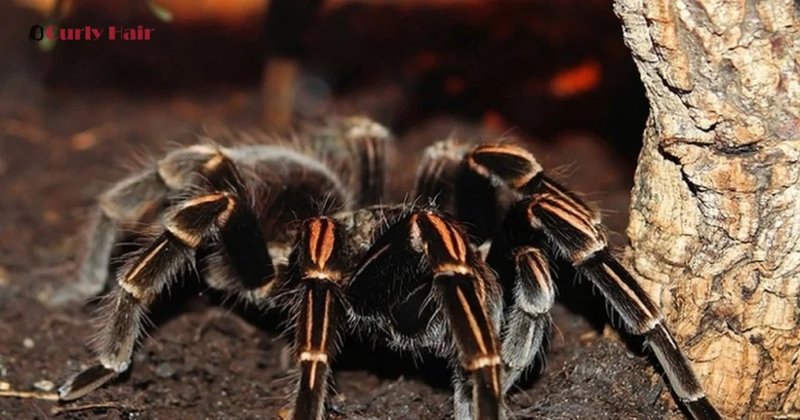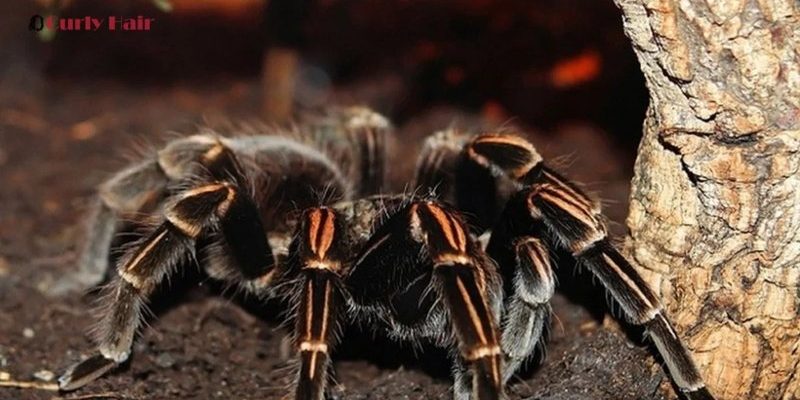
Curly Hair Tarantulas, with their distinctly fuzzy, curly hair, offer a glimpse into the diversity of the spider world. Whether you’re a newbie fascinated by these eight-legged creatures or someone considering one as a pet, understanding how they differ from other tarantulas can be quite enlightening. So, let’s take a closer look at what makes the Curly Hair Tarantula stand out from the crowd.
What is a Curly Hair Tarantula?
The Curly Hair Tarantula, scientifically known as *Brachypelma albopilosum*, originates from Central America, particularly countries like Nicaragua and Honduras. Their most defining feature is their curly, shaggy hair, which gives them an almost huggable appearance. These tarantulas are typically a mix of browns and blacks, with their curly setae (that’s the fancy term for hair) making them quite striking.
In addition to their looks, Curly Hairs are known for their docile temperament. Honestly, if you’re looking for a beginner-friendly spider, this species is often at the top of the list. They tend to be less defensive compared to other tarantulas and are more likely to show curious behavior rather than aggression. That makes them a great option for those who want to observe their tarantula in a more interactive way.
Physical Differences
Now, let’s talk about how the Curly Hair Tarantula differs physically from other types. The most prominent feature, of course, is that curly hair. While other tarantulas may have hairs, the Curly Hair is known for its particularly dense and soft cover. This gives them a unique texture that feels like a plush toy—just don’t cuddle it!
In contrast, species such as the *Goliath Bird-Eating Tarantula* or the *Brazilian Wandering Spider* have smoother exteriors and are much larger. The Goliath can reach up to a foot across, while the Curly Hair typically tops out around 5 to 6 inches.
Here’s a quick comparison to visualize:
| Species | Size | Hair Type |
| Curly Hair Tarantula | 5-6 inches | Curly, dense hair |
| Goliath Bird-Eating Tarantula | Up to 12 inches | Smooth hair |
| Brazilian Wandering Spider | 4-5 inches | Smooth and sleek |
As you can see, the differences can be quite drastic! The unique curly hair of the Curly Hair Tarantula also helps with temperature regulation and camouflage, making them playful and well-adapted to their environment.
Behavior and Temperament
One of the most significant differences between the Curly Hair Tarantula and other tarantulas relates to behavior. Curly Hairs are generally more laid-back and less likely to bite than species like the *Mexican Red-Knee Tarantula*, which can sometimes exhibit a more defensive attitude.
You might be wondering why that is. Well, Curly Hairs often rely on their thick hair for defense. Instead of biting when threatened, they can flick these tiny hairs off their bodies, irritating potential predators. So, they’re like furry little ninjas, ready to defend themselves in a non-lethal way.
This temperament makes them ideal pets for those who might be a bit nervous about handling a spider. When they do feel threatened, they tend to retreat to their burrows rather than confront. So, if you’re new to keeping tarantulas, a Curly Hair could be a great entry point.
Habitat and Environmental Needs
When considering a pet tarantula, it’s essential to understand its habitat needs. Curly Hair Tarantulas thrive in a tropical environment, where humidity and temperature mimic their natural habitats. They prefer a substrate that allows them to burrow—think of it like a cozy home that’s snug and dry.
Other tarantulas, like the *Tarantula Hawk*, may prefer a more arid setup. This means they require less humidity and more open space. If you were to set up a Curly Hair’s habitat similar to that of a more arid tarantula, you’d likely see signs of discomfort in your spider. Here’s a quick rundown of what a Curly Hair needs:
- Temperature: 75-85°F (24-29°C)
- Humidity: 60-70%
- Substrate: Coconut fiber or peat moss for burrowing
- Hiding spots: Logs or artificial caves for security
Creating the right environment is crucial. If you get it wrong, your Curly Hair may become stressed, which can lead to health issues.
Diet and Feeding Habits
Feeding a Curly Hair Tarantula is pretty straightforward, which is another reason why they are so appealing to beginners. Their diet typically consists of insects, with crickets and mealworms being staples. You can also offer occasional treats like roaches or super worms.
In contrast, other tarantulas might have different dietary requirements. For instance, the Goliath Bird-Eater can eat small mammals and amphibians, showcasing its more predatory nature. Curly Hairs, however, prefer to stick to a mostly insect-based diet, which makes them easier to care for.
When feeding, consider these tips:
- Size matters: Offer insects that are about the size of the tarantula’s body.
- Live food: It’s generally best to feed live prey, as tarantulas hunt instinctively.
- Frequency: Feed young tarantulas 2-3 times a week; adults can be fed once a week.
Paying attention to their feeding habits will help ensure they remain healthy and active.
To wrap it all up, the Curly Hair Tarantula is a wonderful example of how diverse the world of tarantulas can be. From their unique curly hair to their generally calm demeanor, they offer a different experience compared to many other tarantula species. Understanding these differences can help you appreciate their beauty and consider one for your own collection.
Whether you’re captivated by their looks or their chill nature, Curly Hairs bring a special charm to the spider world. And honestly—seeing one in person or taking care of one can be quite rewarding. If you’ve ever thought about diving into the captivating world of tarantulas, a Curly Hair just might be your perfect choice!

